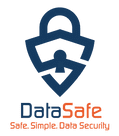Protecting your files from loss or unauthorized access should be your top priority, whether you’re an individual user or a business entity. From cherished memories to critical business documents, the value of protecting files cannot be overstated. File backup and sync offer practical solutions to ensure data integrity and availability.
Continue reading to learn about file backup and sync best practices.
Understanding the Importance of File Backup and Sync
Data loss can be caused by a variety of factors, including hardware failures, accidental deletions, or malware attacks. File backup and sync safeguard your files by creating redundant copies and ensuring consistent availability.
Here are a few benefits of having a strong file backup and sync strategy in place:
Protection against Data Loss
Losing valuable files can lead to permanent data loss, emotional distress, or financial fallout. Regularly backing up your files creates redundant copies that can be restored in the event of information loss, ensuring availability and continuity.
Recovery from Accidental Changes
Accidental file modifications can have severe effects on data availability. By maintaining backups, you can recover previous file versions or restore deleted items, reducing the impact of such accidents.
Protection against Malware and Ransomware Attacks
Malicious software can encrypt or corrupt files, making them inaccessible. Sometimes these attacks result in ransom demands. If you have extra copies of your files stored somewhere safe, you can recover your data without giving in to cybercriminals’ demands.
Seamless Transition across Devices
Whether switching between a laptop, smartphone, or tablet, file sync lets you have the latest version of your files readily available across all devices. It ensures a seamless transition and enables you to continue your work regardless of the device.
Enhanced Collaboration
For businesses and teams, file sync enables efficient collaboration by providing a centralized repository for files. It allows team members to access, edit, and share files in real time, boosting collaboration and productivity. Moreover, with automatic synchronization, everyone can work on the latest file version, eliminating conflicts and streamlining workflows.
Compliance and Legal Requirements
Organizations must adhere to various laws and industry regulations that dictate how data should be protected, stored, and retained. By implementing robust backup and sync practices, organizations can ensure compliance with these regulations, demonstrate their commitment to data security, privacy, and accountability, and enhance customer trust.
Peace of Mind
One of the most valuable aspects of file backup and sync is the peace of mind it brings. Knowing that your important files are protected from unforeseen events and easily recoverable provides a sense of reassurance and eases the fear of data loss.
Best Practices for File Backup and Sync

Implementing file backup and sync practices is crucial for ensuring the security and accessibility of your data. To maximize the effectiveness of these practices, it is essential to follow certain best practices. Here are some key guidelines to consider:
Choose the Right Backup and Sync Solution
Selecting reliable backup and sync solutions is crucial for ensuring the safety of your files. Look for software or services that offer robust encryption, version control, and secure storage options.
Determine the Data to Be Backed Up
Evaluate the importance and sensitivity of your files to determine what should be part of your backup and sync routine. Consider critical documents, personal photos, financial records, and other irreplaceable data.
Establish a Regular Backup Schedule
You must establish a consistent backup schedule to protect your files. Determine how frequently your data changes and set up automatic backups accordingly. Regular backups will minimize the risk of data loss and reduce potential issues.
Utilize Redundancy with Multiple Backup Locations
Relying on a single backup location can still leave your data vulnerable. Adopt redundancy by utilizing multiple backup locations. This could include storing files on an external hard drive while syncing them with a cloud storage provider. In the event of a failure, redundancy provides an additional layer of protection.
Employ Encryption for Added Security
Data encryption plays a vital role in safeguarding your files from unauthorized access. Ensure that your backup and sync solutions support encryption to protect your data, especially during transit. Encryption offers extra protection, making it far more difficult for attackers to access your files.
Test and Verify Your Backups
Regularly test your backups by restoring files to ensure they are usable. This practice ensures that your backups are reliable and that you can recover your data successfully.
Protect against Ransomware Attacks
Ransomware attacks have become increasingly prevalent, making protecting your backups from these threats crucial. Employ offline or cloud-based backup solutions with built-in security measures to safeguard your files against encryption-based attacks. Regularly update your security software to defend against emerging threats.
Regularly Review and Update Your Backup Strategy
Technology evolves rapidly, and so do the threats that come with it. Regularly review and update your backup strategy to ensure it aligns with the latest security practices and addresses potential vulnerabilities. Stay informed about new backup solutions and best practices to enhance data security.
Educating Users on File Backup and Sync Best Practices
By providing proper guidance and training, organizations can empower users to actively participate in protecting valuable files and minimizing the risks associated with data loss or unauthorized access. Conduct regular refresher sessions and provide resources, such as user guides or FAQs, to reinforce the importance of file backup and sync best practices.
Achieving data security through effective file backup and sync practices can protect your valuable files from loss, corruption, or unauthorized access. Remember to choose reliable solutions to back up your essential files. The professionals at Data Safe Group LLC can help you choose reliable solutions to back up your essential files effectively. Contact us for more details.

